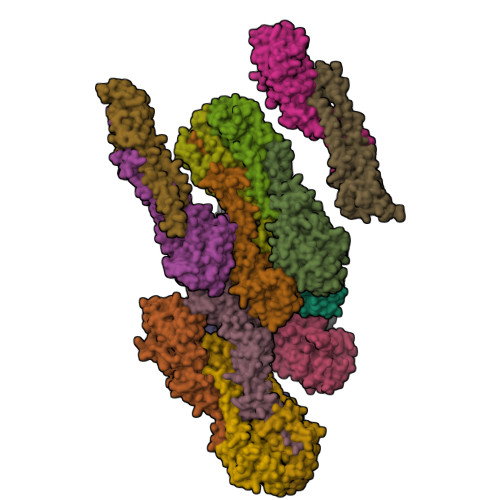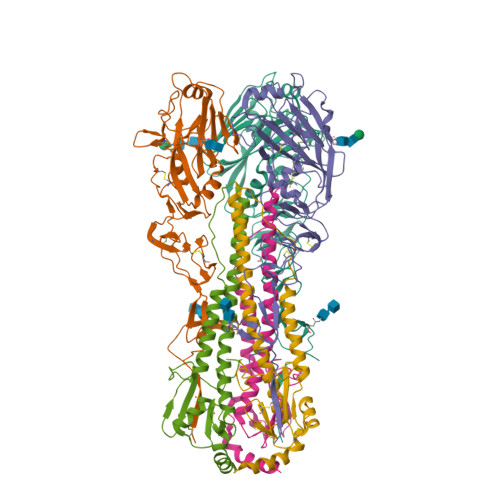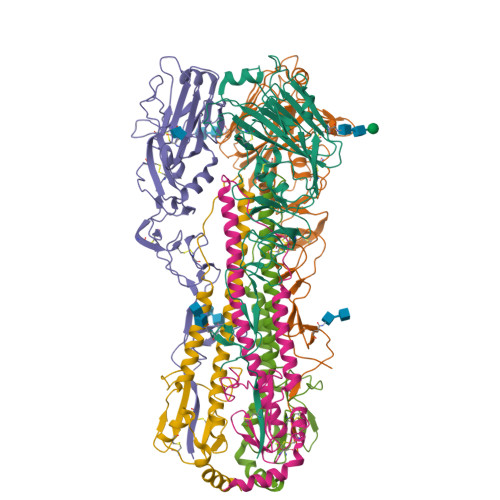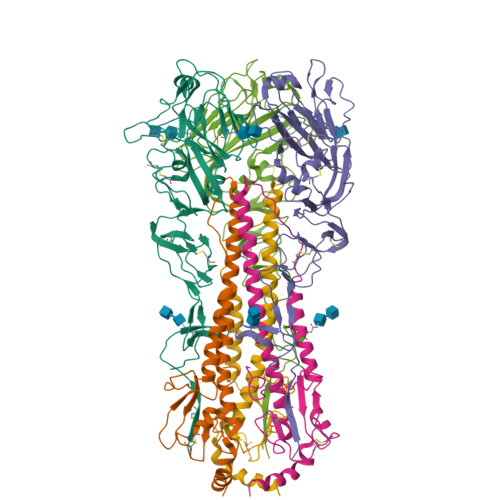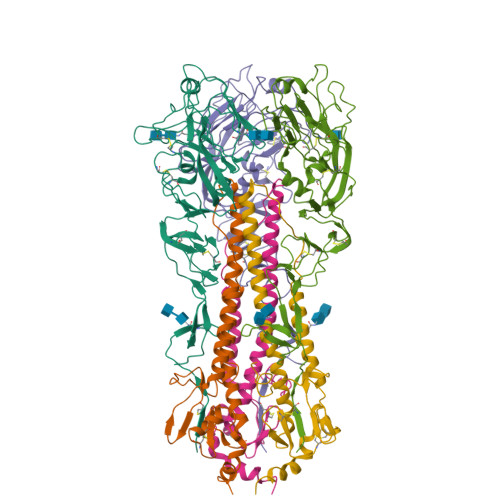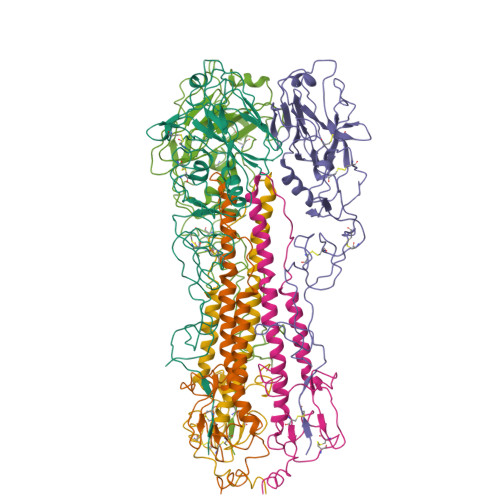Structure and Receptor Specificity of the Hemagglutinin from an H5N1 Influenza Virus.
Stevens, J., Blixt, O., Tumpey, T.M., Taubenberger, J.K., Paulson, J.C., Wilson, I.A.(2006) Science 312: 404-410
- PubMed: 16543414
- DOI: https://doi.org/10.1126/science.1124513
- Primary Citation of Related Structures:
2FK0 - PubMed Abstract:
The hemagglutinin (HA) structure at 2.9 angstrom resolution, from a highly pathogenic Vietnamese H5N1 influenza virus, is more related to the 1918 and other human H1 HAs than to a 1997 duck H5 HA. Glycan microarray analysis of this Viet04 HA reveals an avian alpha2-3 sialic acid receptor binding preference. Introduction of mutations that can convert H1 serotype HAs to human alpha2-6 receptor specificity only enhanced or reduced affinity for avian-type receptors. However, mutations that can convert avian H2 and H3 HAs to human receptor specificity, when inserted onto the Viet04 H5 HA framework, permitted binding to a natural human alpha2-6 glycan, which suggests a path for this H5N1 virus to gain a foothold in the human population.
Organizational Affiliation:
Department of Molecular Biology, Scripps Research Institute, 10550 North Torrey Pines Road, La Jolla, CA 92037, USA. jstevens@scripps.edu








